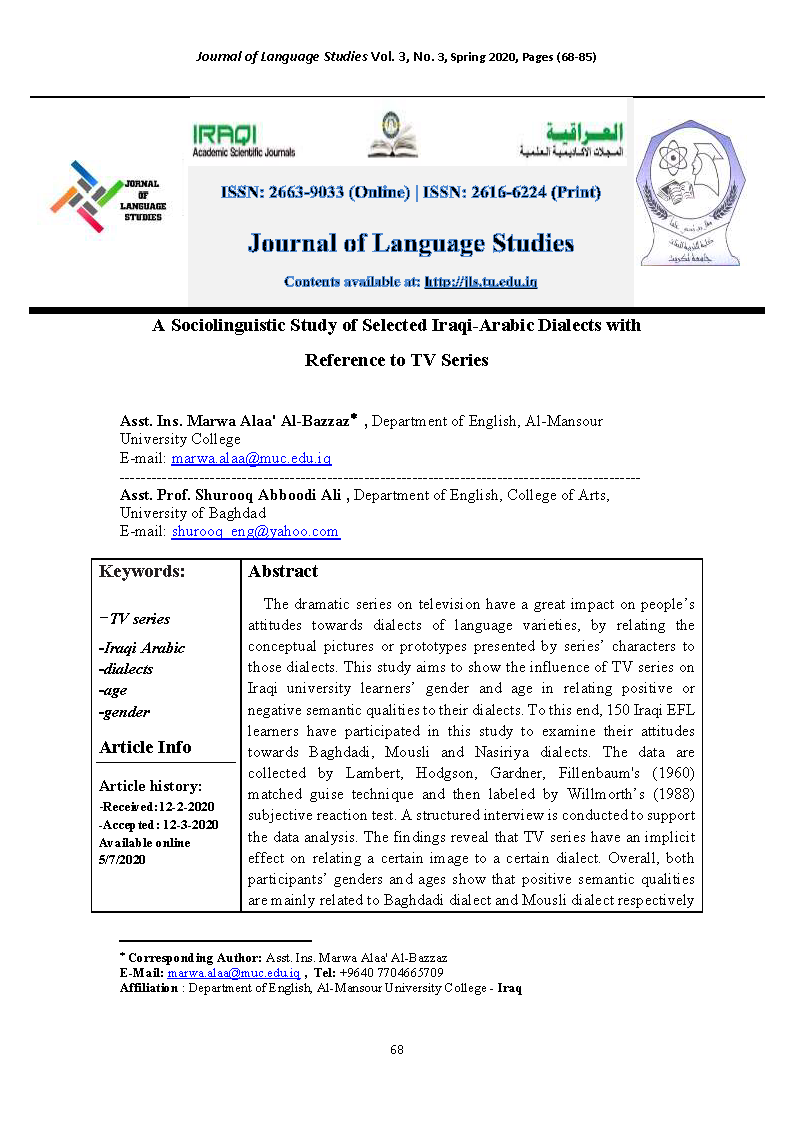A Sociolinguistic Study of Selected Iraqi-Arabic Dialects with Reference to TV Series
DOI:
https://doi.org/10.25130/jls.3.3.4Keywords:
-TV series -Iraqi Arabic -dialects -age -genderAbstract
The dramatic series on television have a great impact on people’s
attitudes towards dialects of language varieties, by relating the
conceptual pictures or prototypes presented by series’ characters to
those dialects. This study aims to show the influence of TV series on
Iraqi university learners’ gender and age in relating positive or
negative semantic qualities to their dialects. To this end, 150 Iraqi EFL
learners have participated in this study to examine their attitudes
towards Baghdadi, Mousli and Nasiriya dialects. The data are
collected by Lambert, Hodgson, Gardner, Fillenbaum's (1960)
matched guise technique and then labeled by Willmorth’s (1988)
subjective reaction test. A structured interview is conducted to support
the data analysis. The findings reveal that TV series have an implicit
effect on relating a certain image to a certain dialect. Overall, both
participants’ genders and ages show that positive semantic qualities
are mainly related to Baghdadi dialect and Mousli dialect respectively

